What is an Airline Cover Letter
An airline cover letter is your first opportunity to make a great impression on a potential employer. It’s a critical document that accompanies your resume, providing a personalized introduction and showcasing your qualifications for a specific role within the airline industry. Unlike a resume, which offers a snapshot of your experience, a cover letter allows you to tell a story, demonstrating your enthusiasm, and explaining why you are the ideal candidate. It is a chance to highlight your skills and experience while tailoring your application to the specific requirements of the airline and the job you are applying for. A well-crafted cover letter can significantly increase your chances of landing an interview and ultimately securing your dream job in the airline industry.
Why You Need a Compelling Cover Letter for Airline Jobs
In the competitive world of airline jobs, a compelling cover letter is not just a formality; it’s a necessity. It sets you apart from other applicants and provides a clear advantage. The airline industry values candidates who are not only qualified but also demonstrate a genuine interest in the company and the specific role. A well-written cover letter allows you to highlight your understanding of the airline’s values, culture, and mission. It gives you the opportunity to go beyond the facts presented in your resume and express your personality, enthusiasm, and specific reasons for wanting to work for that particular airline. In a field where attention to detail and communication skills are paramount, a cover letter that is well-crafted, error-free, and tailored to the role demonstrates professionalism and increases your chances of getting noticed.
Highlighting Your Skills and Experience
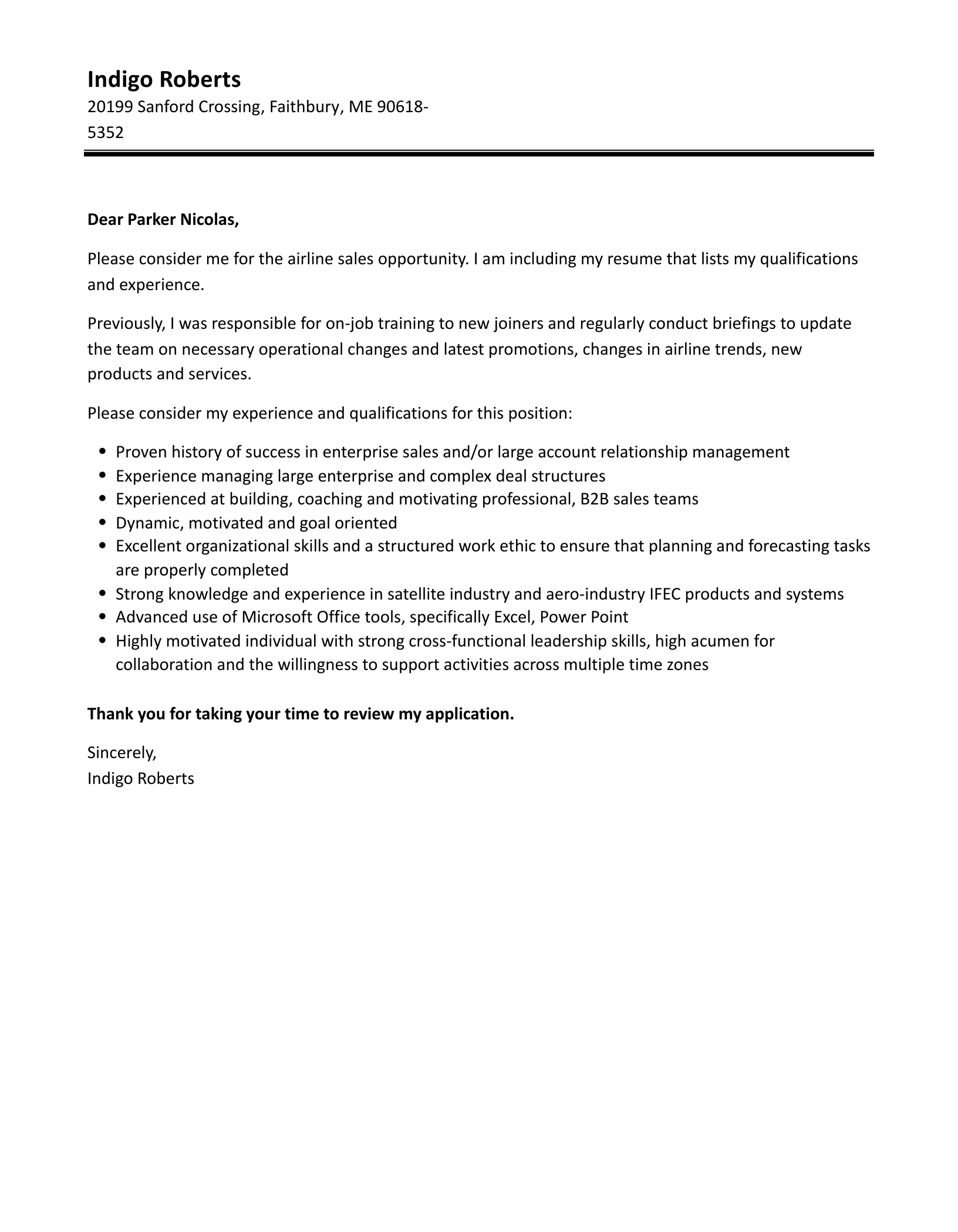
One of the primary purposes of your cover letter is to showcase the skills and experiences that make you a strong candidate. This section should provide a clear and concise overview of your qualifications, focusing on the elements that directly relate to the job description. Instead of simply restating your resume, use this space to provide further detail and context. Explain how your skills have been applied in previous roles and the positive outcomes you achieved. This allows the hiring manager to see the value you bring to the organization and understand why you are the right fit for the position. By skillfully weaving your skills and experience into a narrative, you create a compelling case for why you deserve an interview.
Showcasing Relevant Skills
When highlighting your skills, be specific and relevant to the job you are applying for. Review the job description carefully and identify the key skills and qualifications the airline is looking for. Then, use your cover letter to illustrate how you possess these skills and can apply them effectively. Examples of skills that are often valued in the airline industry include excellent communication, customer service, problem-solving, and the ability to work under pressure. Provide specific examples of how you have demonstrated these skills in previous roles or situations, quantifying your achievements whenever possible. For instance, instead of stating that you are a good communicator, describe a situation where you successfully resolved a customer issue by effectively communicating with them and providing a solution.
Demonstrating Experience
In addition to highlighting your skills, your cover letter should showcase your relevant experience. Focus on experiences that align with the requirements of the job. This could include previous roles in customer service, aviation, or any industry that emphasizes teamwork and problem-solving. Describe your responsibilities, achievements, and the skills you developed in each role. Use the STAR method (Situation, Task, Action, Result) to provide detailed examples of your accomplishments. For instance, if you are applying for a customer service position, describe a situation where you went above and beyond to assist a customer, the task you were assigned, the action you took, and the positive result of your efforts. This approach provides concrete evidence of your ability to perform the job successfully.
Tailoring Your Cover Letter
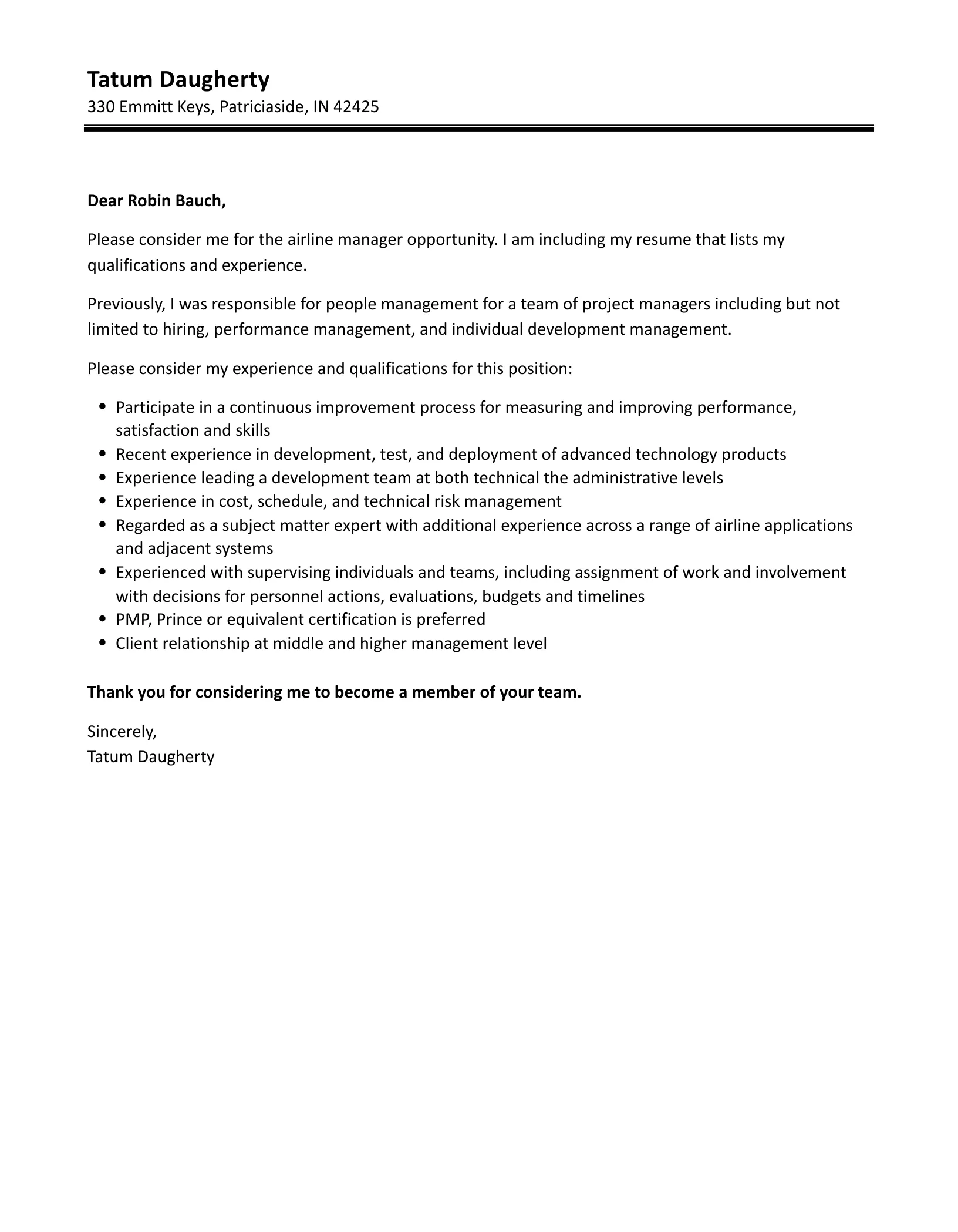
A generic cover letter sent to multiple airlines is unlikely to impress hiring managers. To increase your chances of success, it is essential to tailor your cover letter to each specific job and airline. This shows that you have taken the time to research the company and understand its needs, demonstrating your genuine interest in the role. This approach will help you stand out from the crowd and demonstrate your commitment to the airline and the specific position.
Researching the Airline
Before writing your cover letter, thoroughly research the airline. Visit their website, social media pages, and any other relevant sources to learn about their mission, values, culture, and recent news. Understanding the airline’s priorities will help you tailor your letter to showcase how your skills and experience align with their goals. For example, if the airline emphasizes customer satisfaction, highlight your customer service skills. If they are known for innovation, mention any experience you have with new technologies or processes. Showing that you understand the airline’s unique attributes and can contribute to their success will make your application much more compelling. This shows that you are not just applying for a job, but are specifically interested in working for that airline.
Matching Skills to Job Requirements
Carefully review the job description and identify the key requirements and qualifications. Then, tailor your cover letter to directly address these requirements. Use specific examples to demonstrate how your skills and experience match the needs of the role. For instance, if the job requires strong organizational skills, provide an example of how you have successfully managed multiple projects or tasks simultaneously. If the job requires experience with a specific software or system, mention your proficiency and any relevant certifications. By directly addressing the job requirements, you make it easy for the hiring manager to see that you are a good fit for the position and will be more likely to advance to the next stage of the hiring process. Emphasize the skills and experiences that make you a strong candidate, and illustrate your ability to contribute to the company’s success.
Writing a Strong Opening
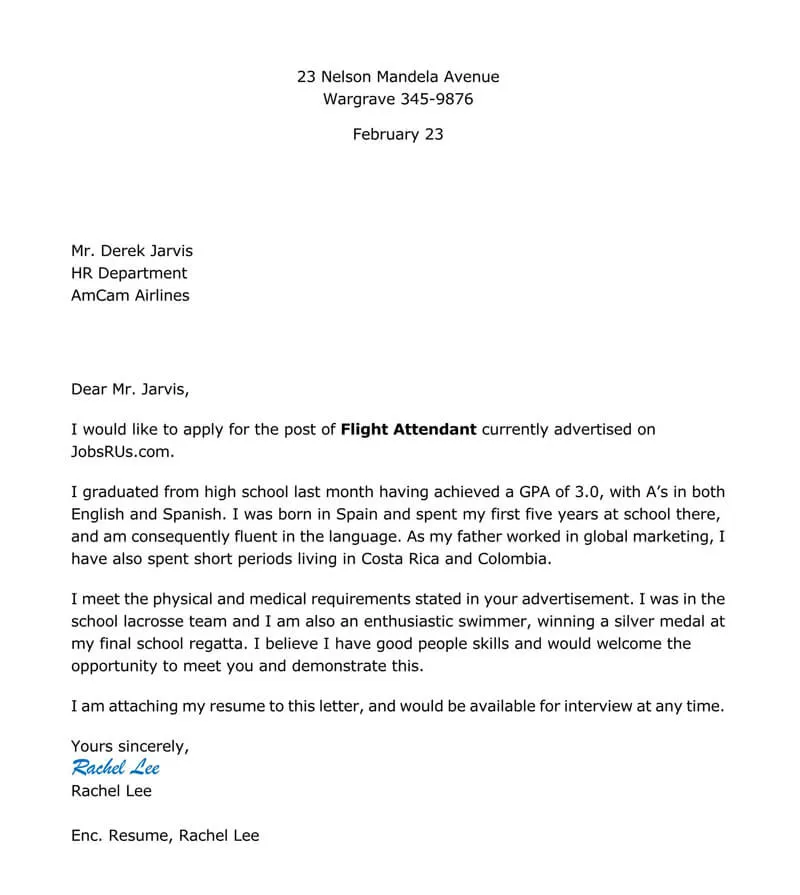
The opening of your cover letter is crucial for grabbing the reader’s attention and making a positive first impression. This is your chance to hook the hiring manager and make them want to read the rest of your application. A compelling opening sets the tone for the entire letter and significantly influences the hiring manager’s perception of you as a candidate. It is where you make your initial connection and demonstrate your understanding of the role and the airline. This is a great chance to show enthusiasm and your desire to work for that company.
Grabbing Attention Immediately
Start your cover letter with a statement that immediately grabs the reader’s attention. Avoid generic greetings and phrases. Instead, try using a compelling opening that reflects your personality. This could involve a brief anecdote related to the airline industry, a statement about your passion for aviation, or a specific achievement that aligns with the job’s requirements. For example, you might start by mentioning a time you successfully resolved a complex customer issue or by expressing your excitement about the airline’s recent achievements. By creating an intriguing opening, you increase the likelihood that the hiring manager will continue reading and give your application the attention it deserves.
Clearly Stating Your Intent
Following your attention-grabbing opening, clearly state the specific position you are applying for and where you found the job posting. This demonstrates that you are organized and know exactly what you are seeking. Also, briefly mention why you are interested in the role and the airline. Avoid generic statements; instead, show genuine enthusiasm and highlight what specifically attracts you to the position and the company. For example, you could mention your admiration for the airline’s commitment to safety, its dedication to customer service, or its innovative approach to the industry. This will help establish your interest in the role and your understanding of the airline’s values.
Body Paragraphs Strategies
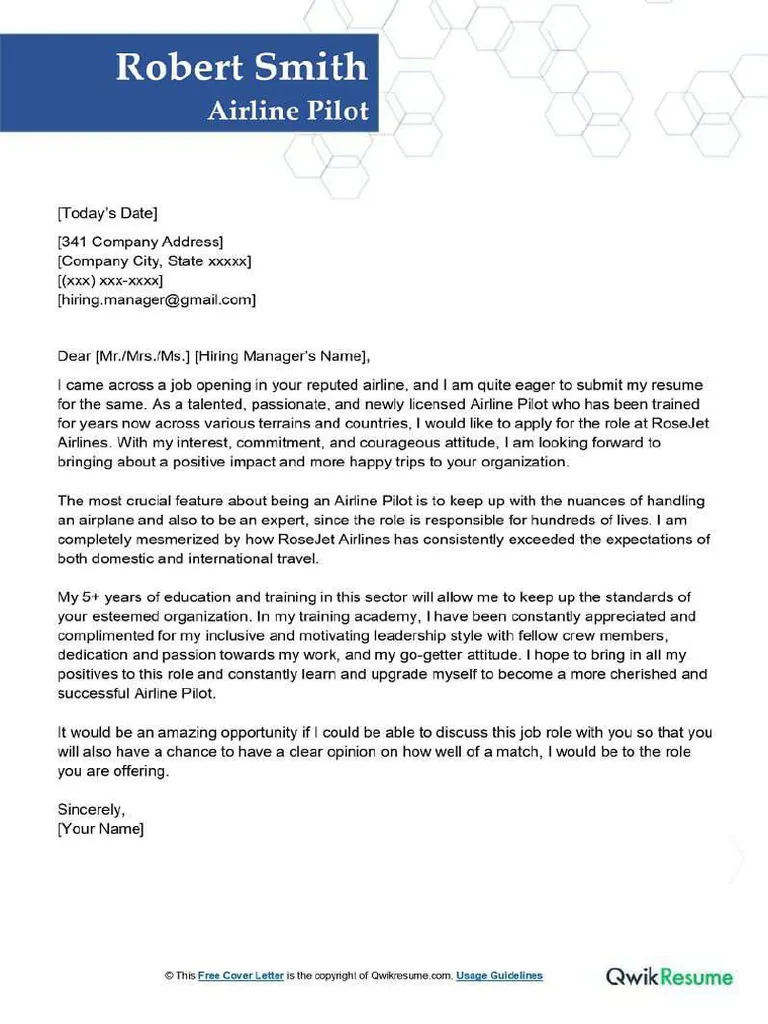
The body paragraphs are where you provide the substance of your cover letter. They are where you elaborate on your skills, experience, and qualifications. The body paragraphs should provide specific examples that demonstrate your ability to meet the job requirements. Use this space to make your case as a top candidate. These paragraphs should be concise, well-organized, and focused on the value you bring to the organization.
Using Action Verbs
When describing your skills and experience, use strong action verbs to create a dynamic and engaging narrative. Action verbs make your accomplishments sound more impactful and demonstrate your active involvement in previous roles. Instead of writing “Responsible for customer service,” use verbs like “Managed customer inquiries” or “Resolved customer complaints.” Use a variety of action verbs to avoid repetition and to keep your writing interesting. Some examples include: achieved, implemented, led, improved, coordinated, trained, and developed. These verbs give the hiring manager a clear picture of your capabilities and accomplishments, making it easier for them to understand your contributions in previous roles.
Quantifying Achievements
Whenever possible, quantify your achievements to demonstrate the impact you had in previous roles. Using numbers and statistics makes your accomplishments more tangible and helps the hiring manager understand the scope of your contributions. Instead of stating that you “improved customer satisfaction,” you could write, “Increased customer satisfaction scores by 15% through implementing a new training program.” For example, if you increased sales, state by how much. If you reduced costs, specify the percentage or dollar amount. If you improved efficiency, provide the time savings or the number of tasks completed. Quantitative data provides a clear picture of your accomplishments and demonstrates the value you bring to an organization.
Addressing Potential Weaknesses
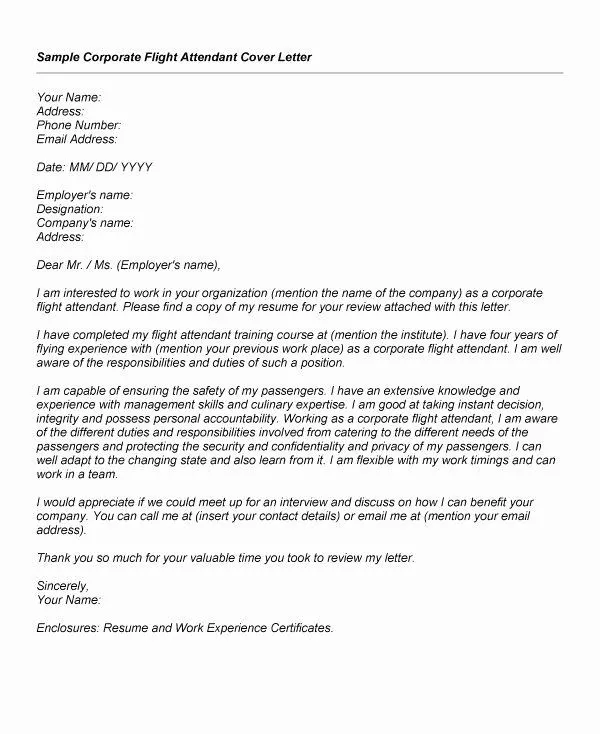
If there are any potential weaknesses or gaps in your resume, address them proactively in your cover letter. This demonstrates that you are self-aware and honest. If, for example, you have a gap in your employment history, briefly explain the situation and highlight any relevant activities or skills you developed during that time. If you are transitioning careers, explain why you are making the change and how your skills are transferable. When addressing potential weaknesses, focus on the positive aspects and emphasize what you have learned or gained from the experience. Frame the issue as a learning opportunity or a way you have gained valuable skills, rather than dwelling on the negative.
Crafting a Powerful Closing
The closing of your cover letter is an opportunity to reiterate your interest, express enthusiasm, and make a final impression. A strong closing leaves the hiring manager with a positive impression of you and encourages them to take the next step by contacting you for an interview. By crafting a powerful closing, you increase your chances of success and secure your dream job in the airline industry. This is where you confirm your interest, provide contact information, and include a call to action.
Reiterating Interest and Enthusiasm
In your closing paragraph, restate your interest in the position and the airline. Express your enthusiasm for the opportunity and reiterate why you are a good fit for the role. Briefly summarize your key qualifications and highlight how your skills and experience align with the job requirements. If possible, connect your aspirations to the airline’s mission or values to show that you share their vision. For example, you might mention your excitement about contributing to the airline’s commitment to safety and customer satisfaction. By reiterating your interest and enthusiasm, you reinforce your desire to work for the airline and leave a lasting positive impression.
Providing Contact Information
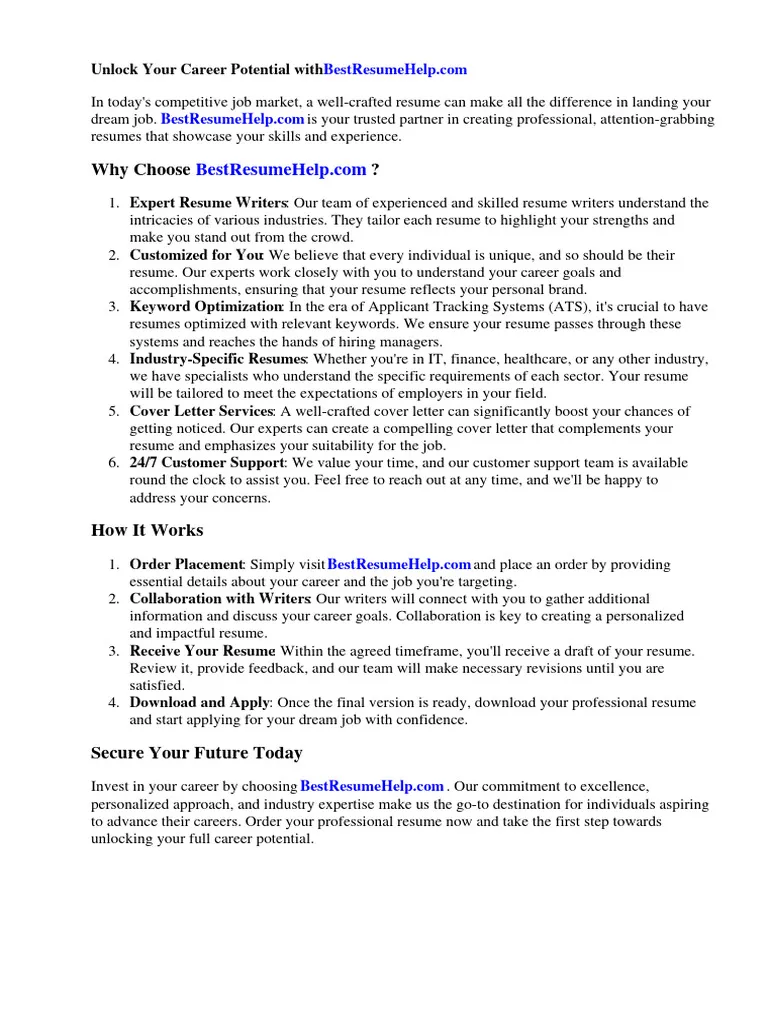
Make it easy for the hiring manager to contact you by providing your contact information at the end of your cover letter. Include your phone number, email address, and a link to your professional online profile, such as LinkedIn, if applicable. Ensure that your contact information is up-to-date and accurate. Also, choose a professional email address; avoid using nicknames or unprofessional usernames. Include a professional signature and thank the hiring manager for their time and consideration. End with a professional closing, such as “Sincerely” or “Best regards.” This will facilitate communication and demonstrates your professionalism and attention to detail.
Formatting and Proofreading
The formatting and proofreading of your cover letter are critical. They reflect your professionalism and attention to detail. A well-formatted and error-free cover letter demonstrates that you take your job application seriously and are committed to producing high-quality work. Take your time and pay attention to these aspects, to ensure that your cover letter presents the best possible image and increases your chances of success. Make sure your cover letter looks polished and demonstrates your professionalism.
Choosing a Professional Format
Choose a professional and easy-to-read format for your cover letter. Use a standard font like Times New Roman, Arial, or Calibri in a size between 10 and 12 points. Maintain consistent formatting throughout the document, including the font, font size, and spacing. Ensure that your cover letter is properly aligned and that the margins are adequate. Use clear headings and subheadings to organize the content and make it easy for the hiring manager to find the information they are looking for. Keep the cover letter to one page in length, as hiring managers often have a limited time to review applications. A well-formatted cover letter is visually appealing, easy to read, and enhances your credibility.
Proofreading for Errors
Proofread your cover letter carefully for any errors in grammar, spelling, punctuation, and capitalization. Errors can create a negative impression and undermine your credibility. Use a spell checker and a grammar checker, but also read the letter aloud to catch any mistakes that the software might miss. Ask a friend or family member to proofread your cover letter as well. A fresh pair of eyes can often catch errors that you might have overlooked. Ensure that all the information is accurate and consistent with your resume and application. By proofreading your cover letter thoroughly, you demonstrate your attention to detail and commitment to producing high-quality work.
Common Mistakes to Avoid
Avoiding common mistakes can significantly improve your cover letter and increase your chances of getting noticed. Being aware of the pitfalls and taking steps to avoid them will make your cover letter stand out and make a positive impression on the hiring manager. By paying attention to these common mistakes, you can ensure that your cover letter is professional, effective, and compelling.
Generic Cover Letters
Avoid using a generic cover letter that is not tailored to the specific job or airline. Generic cover letters show a lack of interest and effort and often fail to highlight the applicant’s relevant skills and experience. Tailor each cover letter to the specific role you are applying for. Research the airline and the job requirements, and use the cover letter to demonstrate how your skills and experience match their needs. This shows the hiring manager that you are serious about the opportunity and that you have taken the time to learn about the company and the role.
Typos and Grammatical Errors
Typos and grammatical errors can damage your credibility and make you appear unprofessional. Always proofread your cover letter carefully before submitting it. Use a spell checker and a grammar checker, but also read the letter aloud to catch any mistakes that the software might miss. Ask a friend or family member to proofread your cover letter as well. A fresh pair of eyes can often catch errors that you might have overlooked. Ensure that your cover letter is free of errors and that it presents you as a detail-oriented and professional applicant.
Ignoring Instructions
Always read the job posting carefully and follow any instructions provided. If the job posting asks for specific information or requests that the cover letter be formatted in a certain way, make sure to comply. Failing to follow instructions can make you appear inattentive to detail and may result in your application being rejected. If the job posting specifies a specific way to submit your application, follow those instructions precisely. By carefully reading and adhering to the job posting’s instructions, you demonstrate that you are a detail-oriented and responsible candidate. This adherence to instructions is a fundamental aspect of ensuring your application is seen and considered.
Conclusion
Crafting an effective cover letter is a crucial step in the job application process. By following these guidelines and avoiding common mistakes, you can create a cover letter that highlights your skills and experience, captures the hiring manager’s attention, and increases your chances of landing an interview. Remember to tailor your cover letter to each specific job, research the airline, showcase your skills and experience, and use a professional format. Proofread your cover letter carefully and always be enthusiastic and demonstrate your genuine interest. By investing time and effort in your cover letter, you’ll demonstrate your dedication and increase your chances of getting hired for an airline job.
